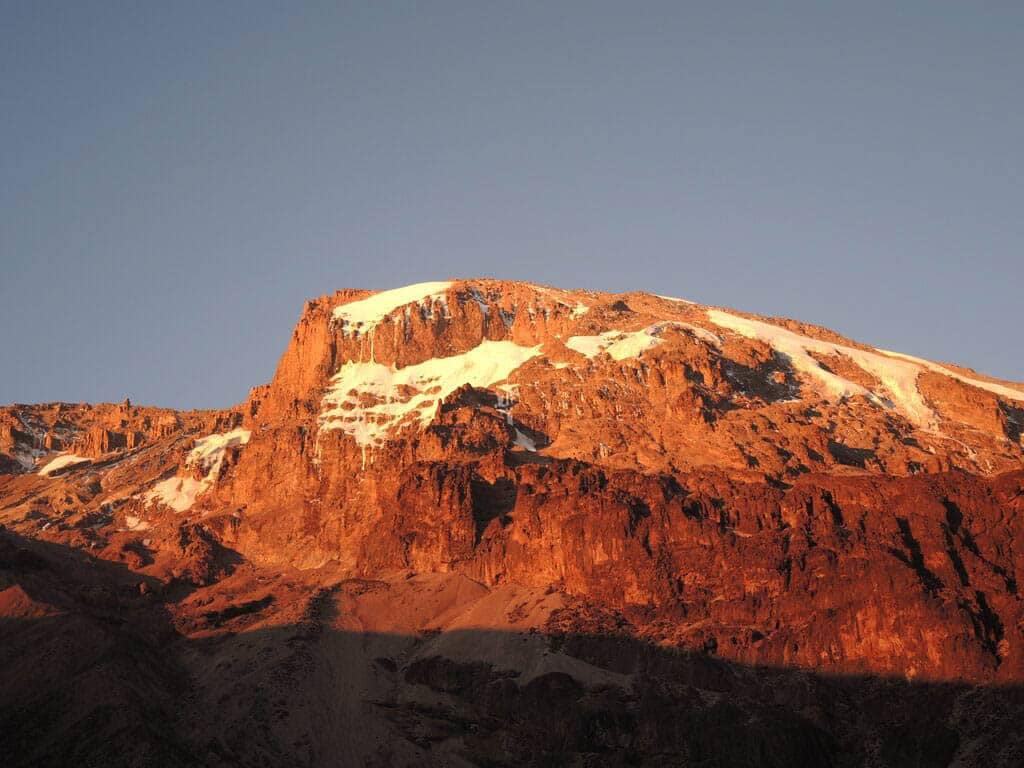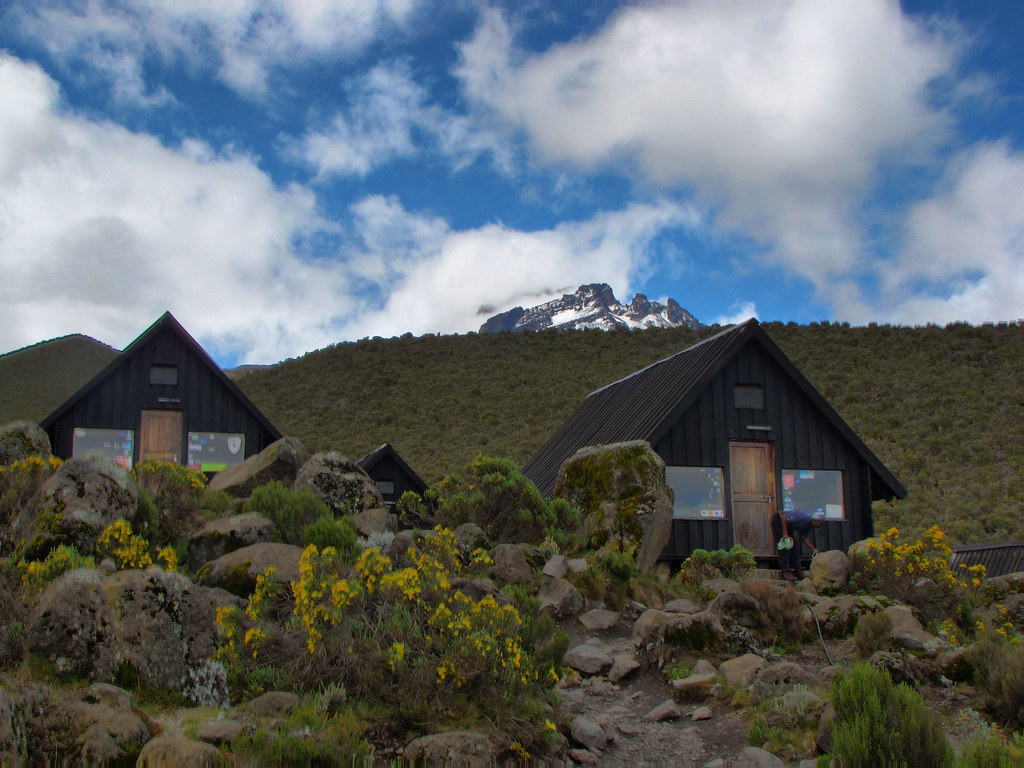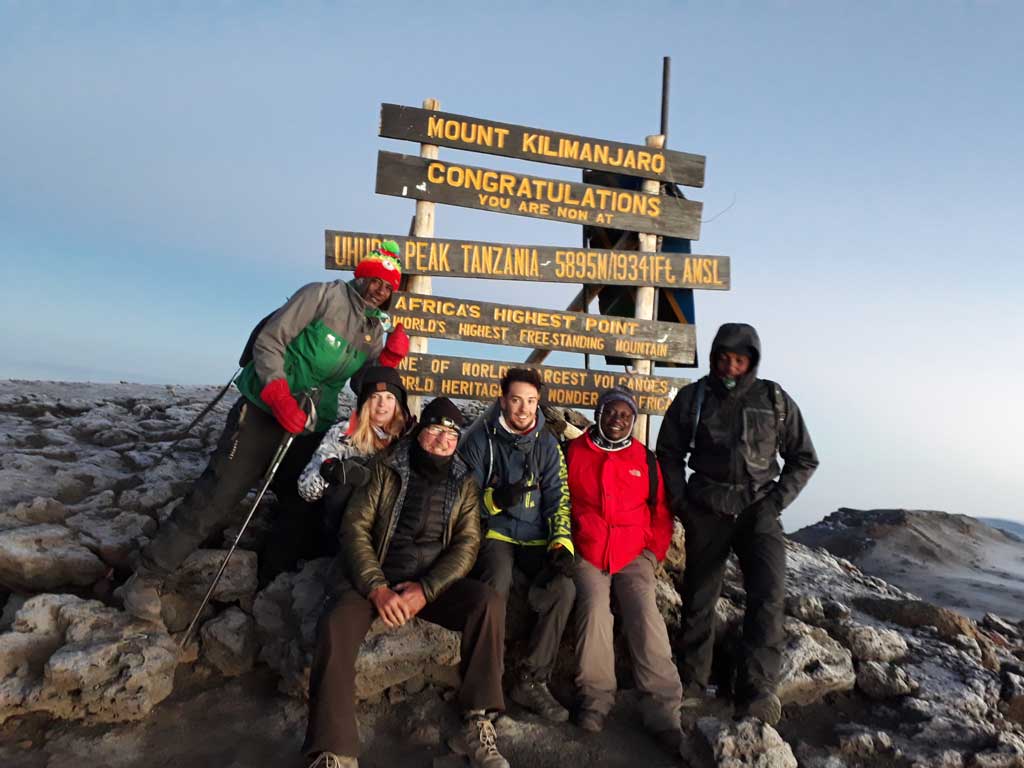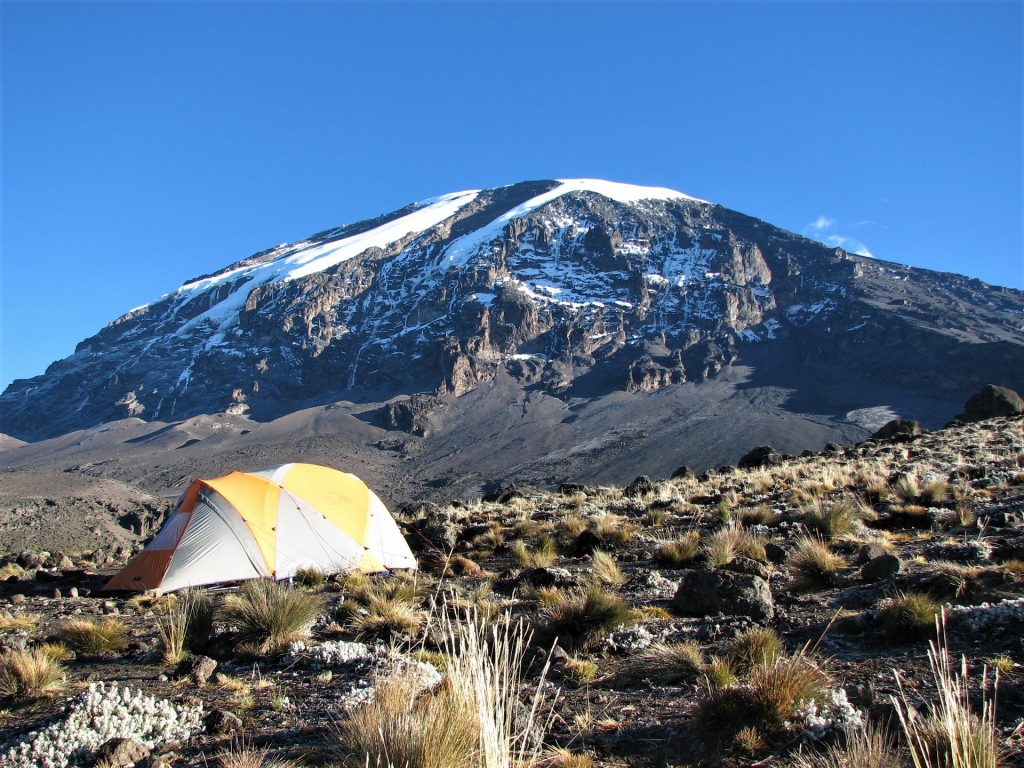Marangu Route
- Home
- Contact us
5 days 4 nights
Rhymes of Wilderness Safari treks up the Marangu Route, which is the easiest and shortest route to Kilimanjaro’s summit and is known as the “Coca Cola” or “tourist” route. This is the only route on Kilimanjaro with the comforts of solar-powered sleeping huts and comfortable beds at every camp. The huts are communal, and each bunk has a sponge mattress and pillow. There are 60 beds at both Mandara and Kibo Huts and 120 beds at Horombo Hut. Bathrooms and running water are available at the two lower huts. Basic men’s and ladies’ latrines are available at the last camp. All climbing groups, often from several countries around the world, share meals in dining huts providing a jovial and energetic atmosphere. Soft drinks, bottled water, and beer may be for sale at the huts. Bring small Tanzanian bills to purchase these items (prices increase with elevation). This route is usually done in 5 days, but you can do it in 6 days for better acclimatization. You can spend your extra day resting at Horombo or climbing to a basecamp below Kibo’s sub peak Mawenzi.
Itinerary:
Day 1:
Arrive at the Kilimanjaro International Airport. You will be met at the airport and transferred to the Hotel in Arusha / Moshi for your overnight. You can start your trek any day of the year! After breakfast and a briefing from your guide, leave Moshi at 9 AM, drive for 45 minutes to the Marangu Gate on the eastern side of Kilimanjaro, register with the national park, and begin hiking at 10:30 AM. In the rainforest, look for towering Eucalyptus trees, bird life, and Colubus monkeys. At these lower elevations, it can be wet and muddy, so gaiters and trekking poles will help. Shorts and t-shirts should be sufficient, but keep your rain gear and warmer clothing handy. Stop halfway for lunch, and reach the Mandara Huts at 2 or 3 PM. Unpack, rest, and have some tea or coffee. A 15 minute side trip to Maundi Crater is a good way to see the surroundings including Northern Tanzania and Kenya. Dinner is served during the early evening at 7 PM. Bathrooms with running water are available.
Day 2:
Wake to a 7:30 AM breakfast, and pack for your next trek. Break camp by 8:30 AM, hike for an hour through rainforest glades, then follow an ascending path through heathland where you can look for giant lobelias and groundsels. Continue up into open moorlands where small shrubs are the main vegetation. Stop halfway for lunch, where you can enjoy amazing views of Mawenzi. Arrive at the Horombo Huts by 3 PM, where you can see Kibo’s summit. Rest, unpack, and prepare for dinner. Bathrooms with running water are available. You may start to feel the effects of altitude here, and to aid your acclimatization, you can choose to spend an extra day resting at Horombo or climbing to a basecamp below Kibo’s sub peak Mawenzi.
Day 3:
Wake to breakfast as usual, but if you wake early you can get some great photos of the sunrise. The first part of the day’s hike climbs through the dwindling heathland that blends into a moonscape as you enter the sweeping saddle connecting Mawenzi and Kibo. When you stop for lunch, and later when you cross this surprisingly large saddle, you can examine the summit climb up Kibo that you will be starting in just a few hours. Be careful to notice any signs of altitude sickness. There is no running water at the Kibo Huts.
Day 4:
Wake at midnight to a light breakfast, then prepare for your summit ascent. The goal is to climb before dawn so that you can reach Uhuru Peak shortly after sunrise. Leave at 1 AM, switchback up steep scree or possibly snow, and reach Gilman’s Point on the crater rim at 5,861 m/18,640 ft between 5 and 7AM. Here, views of the fabled crater and its icecaps greet you. Another 2 hours of hiking along the crater rim near the celebrated snows takes you to Kilimanjaro’s true summit, Uhuru Peak, by 9 AM. This is Africa’s highest point, and you would have to travel more than 3,000 miles toward the Himalayas to find a higher peak! Be sure to have your picture taken at the summit to show your friends. After your summit stay, descend back to the Kibo Huts, have lunch, rest, collect your things, and re cross the saddle to the Horombo Huts. Eat dinner and get some well-deserved sleep! You do the beginning of this climb in the dark with headlamps or flashlights. It will be very cold until you start descending, so you will need all of your warm layers. This is, by far, the most difficult part of the trek. Slowly slowly, or, “pole pole,” and an optimistic attitude will get you there!
Day 5:
Wake as usual, pack, and descend through the moorland to the Mandara Huts. Have lunch there then continue your triumphant recessional down through lush forest to the park gate, which you should reach around 2 or 3 PM. Remember to tip your guides, cooks and portes , since you will be leaving them here. A vehicle will take you back to the Hotel Arusha / Moshi , where it is definitely time for celebration! Depart for the airport or other destinations in Tanzania or Kenya. A trip to the beaches at Zanzibar is a good way to recuperate. We can arrange many reasonably priced trips and safaris around Moshi and the Kilimanjaro region.
Book this Trip
Location Map
Mount Kilimanjaro Routes
Kilimanjaro is a mountain in Tanzania. It is so much more than simply the highest peak on the African continent and the world’s tallest free-standing mountain.
For many, it is the ultimate once-in-a-lifetime personal challenge – a difficult but rewarding experience.
Kilimanjaro’s famed snow-capped mountain rises an astounding 5,895 meters (19,336 feet) above the African lowlands below. It is roughly a 130-kilometer drive from Arusha and is located within the Kilimanjaro National Park, a UNESCO World Heritage Site.
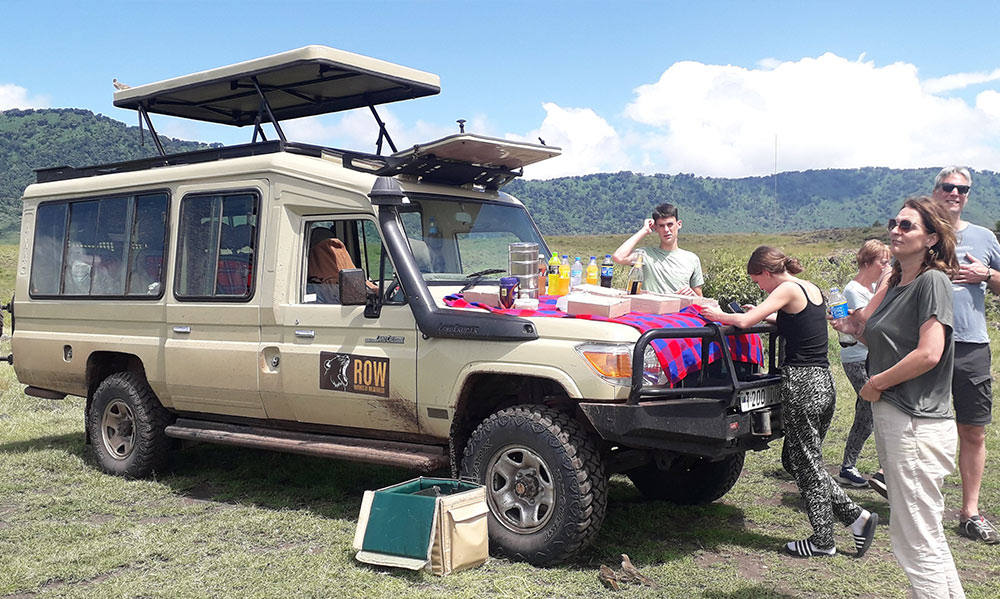
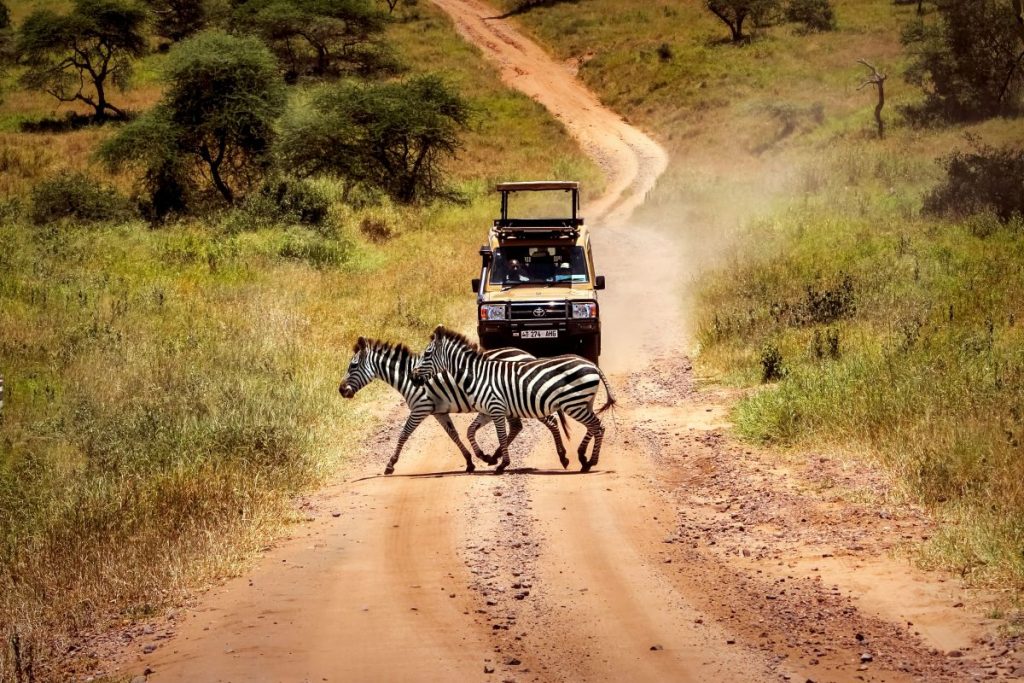
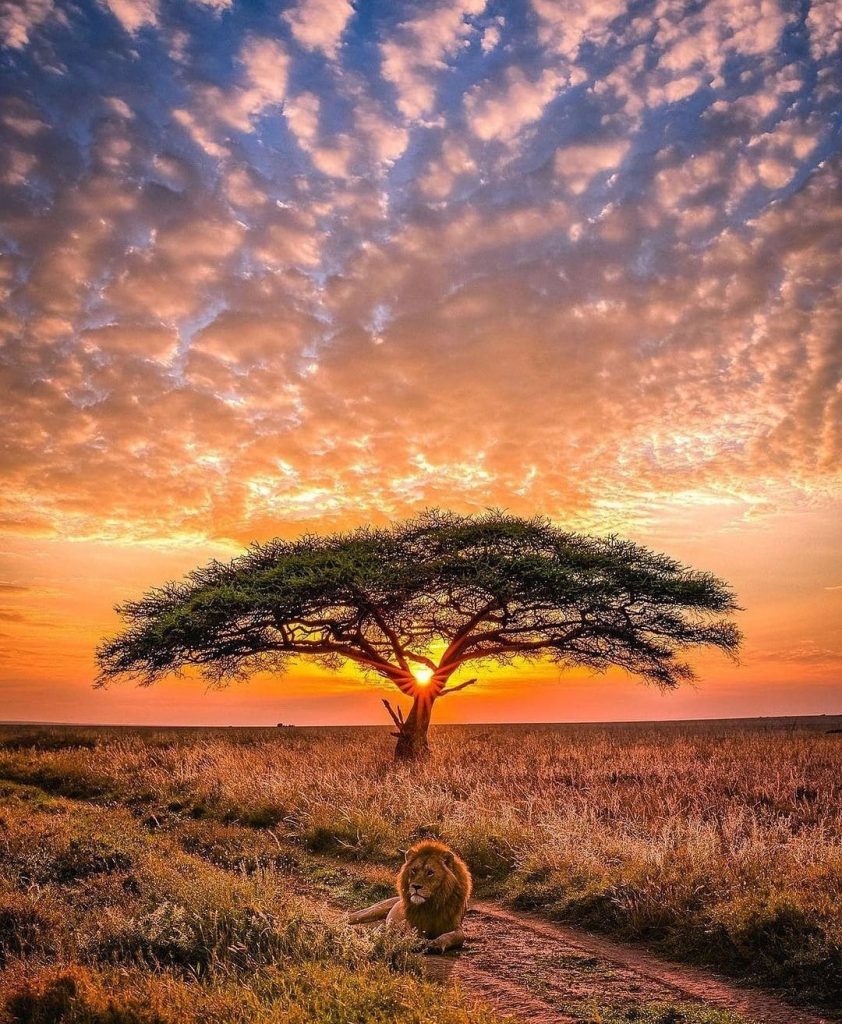
Tanzania #Unforgettable
These are the timeless sights and sounds of the Serengeti, and on Rhymes of Wilderness safari tours, they signal the start of each thrilling day. A safari features the continent’s finest guides, who expertly reveal your destination’s countless wonders.


